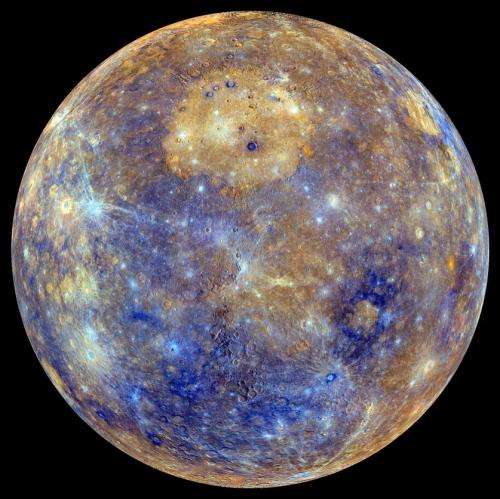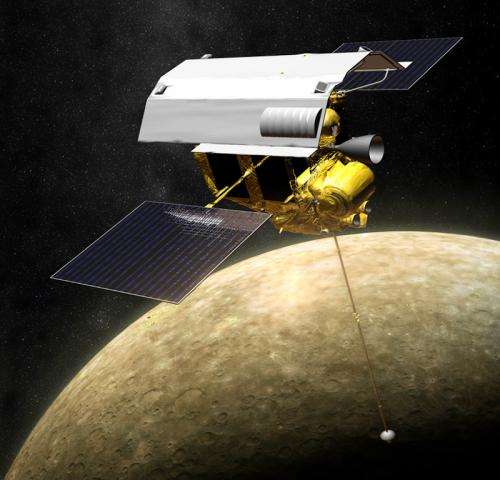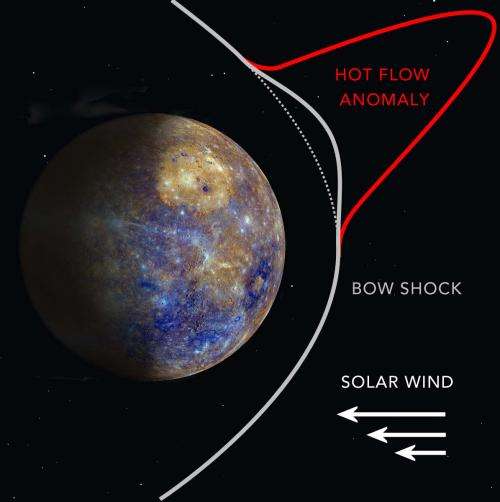What's important to know about planet Mercury?

Close by the Sun is Mercury, a practically atmosphere-like world that has a lot of craters. Until NASA's MESSENGER spacecraft arrived there in 2008, we knew very little about the planet—only part of it had been imaged! But now that the spacecraft has been circling the planet for a few years, we know a heck of a lot more. Here is some stuff about Mercury that's useful to know.
1. Mercury has water ice and organics.
This may sound surprising given that the planet is so close to the Sun, but the ice is in permanently shadowed craters that don't receive any sunlight. Organics, a building block for life, were also found on the planet's surface. While Mercury doesn't have enough atmosphere and is too hot for life as we know it, finding organics there demonstrates how those compounds were distributed throughout the solar system. There's also quite a bit of sulfur on the surface, something that scientists are still trying to understand since no other planet in the Solar System has it in such high concentrations.
2. The water ice appears younger than we would expect.
Close examination of the ice shows sharp boundaries, which implies that it wasn't deposited that long ago; if it was, the ice would be somewhat eroded and mixed in with Mercury's regolith surface. So somehow, the ice perhaps came there recently—but how? What's more, it appears the ice deposits on the Moon and the ice deposits on Mercury are different ages, which could imply different conditions for both of the bodies.
3. Mercury has an atmosphere that changes with its distance to the Sun.

The planet has a very thin atmosphere that is known as an "exosphere" (something that is also present on the Moon, for example.) Scientists have detected calcium, sodium and magnesium in it—all elements that appear to change in concentration as the planet gets closer and further from the Sun in its orbit. The changes appear to be linked to how much solar radiation pressure falls on the planet.
4. Mercury's magnetic field is different at its poles.
Mercury is somehow generating a magnetic field in its interior, but it's quite weak (just 1% that of Earth's). That said, scientists have observed differences in the north and the south pole magnetic strength. Specifically, at the south pole, the magnetic field lines have a bigger "hole" for charged particles from the Sun to strike the planet. Those charged particles are believed to erode Mercury's surface and also to contribute to its composition.
5. Despite Mercury's weak magnetic field, it behaves similarly to Earth's.
Specifically, the magnetic field does deflect charged particles similarly to how Earth does, creating a "hot flow anomaly" that has been observed on other planets. Because particles flowing from the Sun don't come uniformly, they can get turbulent when they encounter a planet's magnetic field. When plasma from the turbulence gets trapped, the superheated gas also generates magnetic fields and creates the HFA.
6. Mercury's eccentric orbit helped prove Einstein's theory of relativity.

Mercury's eccentric orbit relative to the other planets, and its close distance to the Sun, helped scientists confirm Einstein's general theory of relativity. Simply put, the theory deals with how the light of a star changes when another planet or star orbits nearby. According to Encyclopedia Britannica, scientists confirmed the theory in part by reflecting radar signals off of Mercury. The theory says that the path of the signals will change slightly if the Sun was there, compared to if it was not. The path matched what general relativity predicted.
7. Mercury is hard to spot in the sky, but has been known for millennia.
Mercury tends to play peekaboo with the Sun, which makes it somewhat of an observing challenge. The planet rises or sets very close to when the Sun does, which means amateur astronomers are often fighting against twilight to observe the tiny planet. That being said, the ancients had darker skies than we did (no light pollution) and were able to see Mercury pretty well. So the planet has been known for thousands of years, and was linked to some of the gods in ancient cultures.

8. Mercury has no moons or rings.
Scientists are still trying to understand how the Solar System formed, and one of the ways they do so is by comparing the planets. Interesting to note about Mercury: it has no rings or moons, which makes it different from just about every other planet in our Solar System. The exception is Venus, which also has no moons or rings.
Source: Universe Today




















